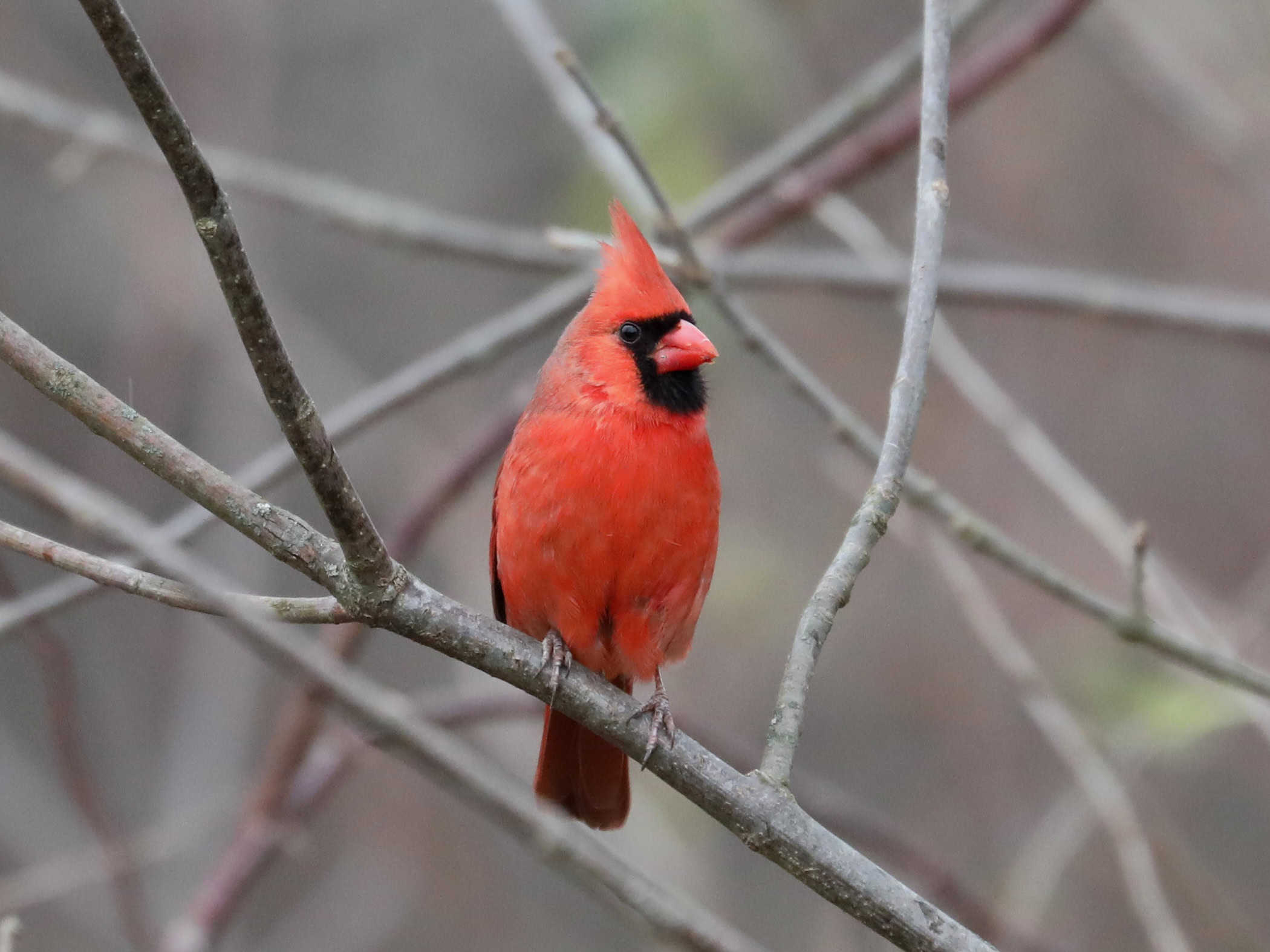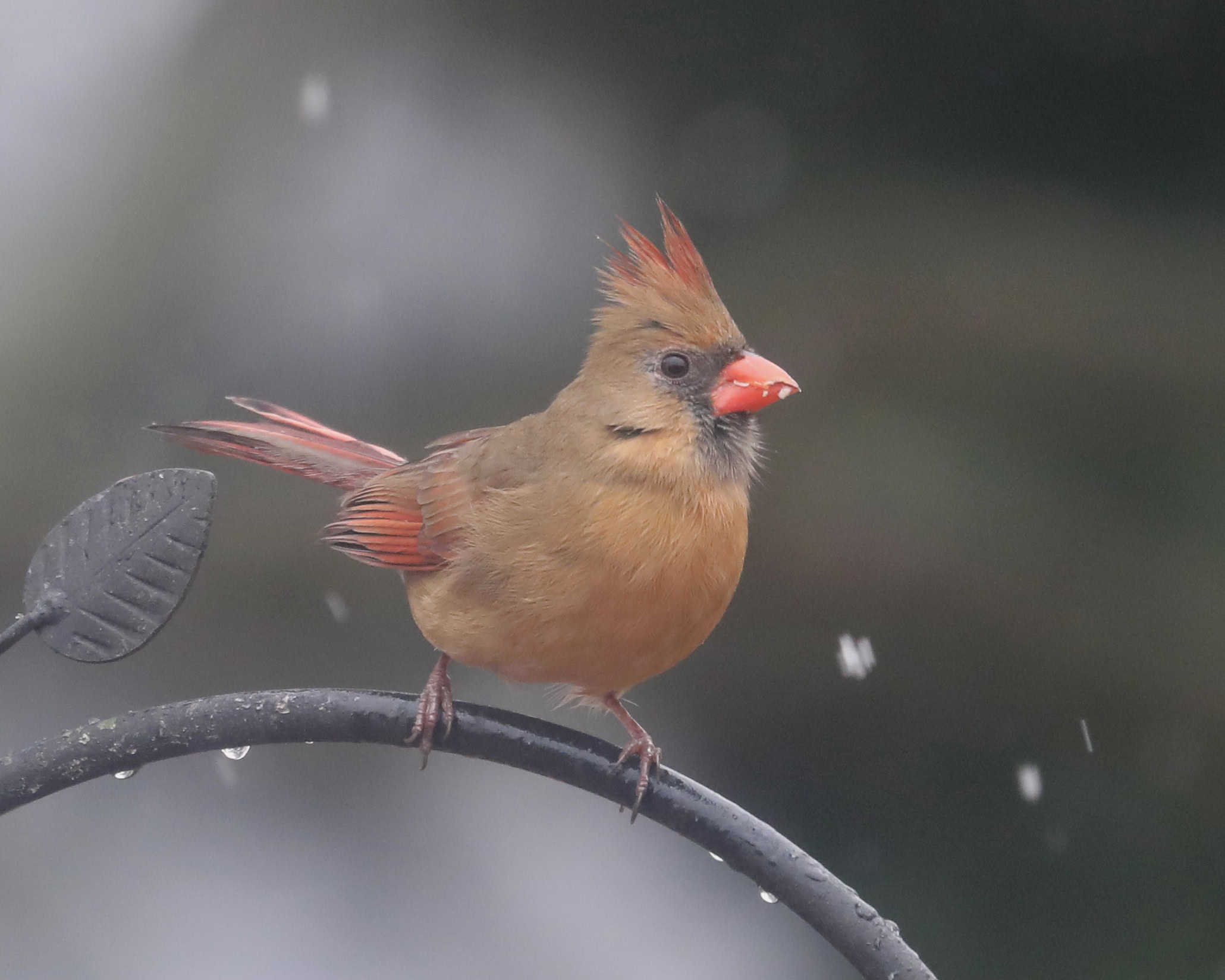Virginia Nightingale: Northern Cardinal
Northern Cardinals are one of our most beloved backyard birds. They’re known by many nicknames, including red-bird and Virginia Nightingale (a reference to their beautiful songs). The popularity of cardinals extends nationwide, where they are the mascot for professional baseball and football teams, as well as the sports teams for at least 15 colleges, and they’re the state bird for seven states: Illinois, Indiana, Kentucky, North Carolina, Ohio, Virginia, and West Virginia.
The Cherokee people have a legend to explain how cardinals got their bright color. In the tale, a mischievous raccoon spread mud over the eyes of a sleeping wolf. When the wolf woke up, it couldn’t see, and it cried out for help. A small brown bird came to the wolf’s aid and pecked away the dried mud so the wolf could see. As a reward, the wolf gave the bird a puddle of beautiful red paint. The brown bird coated its feathers with the bright color, being careful not to get paint in his mouth (the only part of a male cardinal that isn’t red). He then sang to his mate so that she could share the red paint, but there was only enough left to coat parts of her wings and tail and the crest of feathers on her head.
Cardinals were named for the males’ red color, the same color as the robes of a select group of bishops in the Roman Catholic church. Those bishops’ title is based on the Italian word cardo, which means hinge, because many of the Pope’s decisions hinged on the actions of those important church officials. Northern Cardinal also has a very easy-to-learn scientific name: Cardinalis cardinalis.
Virginia Nightingale: Northern Cardinal
Northern Cardinals are one of our most beloved backyard birds. They’re known by many nicknames, including red-bird and Virginia Nightingale (a reference to their beautiful songs). The popularity of cardinals extends nationwide, where they are the mascot for professional baseball and football teams, as well as the sports teams for at least 15 colleges, and they’re the state bird for seven states: Illinois, Indiana, Kentucky, North Carolina, Ohio, Virginia, and West Virginia.
The Cherokee people have a legend to explain how cardinals got their bright color. In the tale, a mischievous raccoon spread mud over the eyes of a sleeping wolf. When the wolf woke up, it couldn’t see, and it cried out for help. A small brown bird came to the wolf’s aid and pecked away the dried mud so the wolf could see. As a reward, the wolf gave the bird a puddle of beautiful red paint. The brown bird coated its feathers with the bright color, being careful not to get paint in his mouth (the only part of a male cardinal that isn’t red). He then sang to his mate so that she could share the red paint, but there was only enough left to coat parts of her wings and tail and the crest of feathers on her head.
Cardinals were named for the males’ red color, the same color as the robes of a select group of bishops in the Roman Catholic church. Those bishops’ title is based on the Italian word cardo, which means hinge, because many of the Pope’s decisions hinged on the actions of those important church officials. Northern Cardinal also has a very easy-to-learn scientific name: Cardinalis cardinalis.
About The Author
Dan Hinnebusch is the Ornithologist for Wild Birds Unlimited. Click to learn more.





